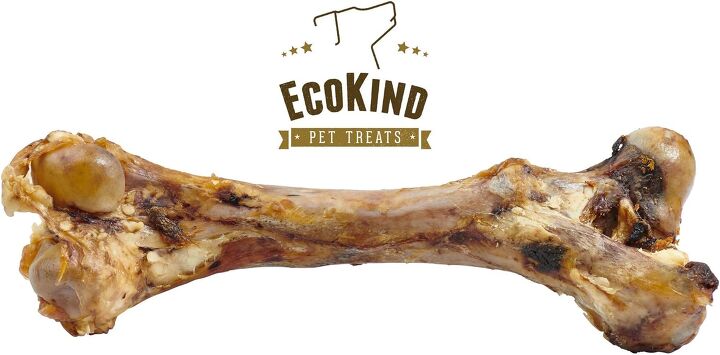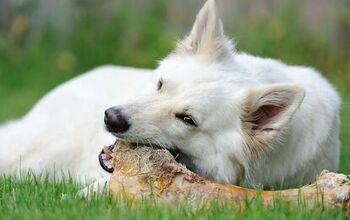Is it OK to Give Dogs Raw Bones?

While dogs can be picky eaters, they’re not really known as pets with the most refined pallets. Pooches tend to be voracious and their appetites are indiscriminate, so they’ll munch on anything – anytime.
However, as a responsible owner, you should make sure that whatever they’re snacking on is something that’s safe for them to eat – which can be a bit stressful. For instance, the image of a dog with a bone is all but ingrained in people’s brains, but do dogs really need to chew on bones? And, if so, are raw bones fine or do you need to cook them first?
Many owners are fearful that bones are not entirely appropriate for dogs, both because of potential bacterial contamination and the risk of bone splintering. Because of this, feeding dogs raw bones can be a controversial topic, and it's important to consider various factors before deciding whether or not to offer this natural snack to your pet. Before you make your decision, here are some important aspects to take into account.
Is it OK to Give Dogs Raw Bones?
Whether it’s a childhood memory or a scene in an old cartoon, you’ve probably seen a dig happily gnawing on a bone (and a cat drinking cow milk), but are bones really good for dogs – or is it just a myth that they enjoy them?
While raw bones for dogs can have some benefits, such as offering important trace minerals, or a way to naturally remove plaque buildup from a dog’s teeth, there are some risks to giving your pet raw bones. Mainly, two things about raw bones concern dog owners – their tendency to splinter and potential bacterial contamination. When it comes to splintering, it is much less likely for a raw bone to splinter than a cooked one, but still, it is wise to choose bigger bones to minimize the risks even more. As for the chance for the bones to be contaminated with salmonella or E. coli, the key is to source the bones from a trusted, responsible supplier.
With those things in mind, if you are still interested in giving your dog raw bones, here are some key steps to follow to make sure that your pet is safe and enjoys their natural chew treat without any adverse effects:
#1 Always supervise your pet
If you decide to give your dog a raw bone, it's essential to supervise them closely. This helps prevent potential choking hazards, broken teeth, or possible injuries if splintering does occur.
#2 Pick the right size
Choose an appropriately sized bone for your dog. Large, weight-bearing bones are generally safer than small, brittle ones. Always avoid small bones that could splinter and pose a choking hazard or cause internal damage.
#3 Be realistic about your pet’s abilities and health status
Some dogs may have stronger chewing abilities than others. Consider your dog's size, age, and chewing habits when selecting a bone – don’t give chicken bones to a Great Dane or expect a Yorkie to enjoy a bison femur bone.
If your dog has certain dental issues, or gastrointestinal problems, or is prone to pancreatitis, it may be best to avoid giving them raw bones. Consult with your veterinarian to ensure it's suitable for your dog's specific health conditions.
#4 Introduce gradually
If you decide to introduce raw bones into your dog's diet, do so gradually. Monitor how your dog reacts and ensure they are handling the bones safely. Any treat or food that is offered suddenly, especially if it’s not similar to something your pet usually eats, can cause a tummy ache.
#5 Avoid cooking bones for your dog
Never give your dog cooked bones, as they can splinter easily into sharp shards and cause serious harm to your dog – even perforating their intestines. If you think your pet has swallowed a bone shard, either cooked or raw one, take them to a vet’s office ASAP.
In the end, if you are interested in the benefits of raw bones for dogs but not too keen on taking the risk, there are various alternatives to raw bones, such as commercial dental chews or toys designed to promote dental health you could consider. These can be a safer option that still provides a satisfying chewing experience.

A proud mama to seven dogs and ten cats, Angela spends her days writing for her fellow pet parents and pampering her furballs, all of whom are rescues. When she's not gushing over her adorable cats or playing with her dogs, she can be found curled up with a good fantasy book.
More by Angela Vuckovic

























